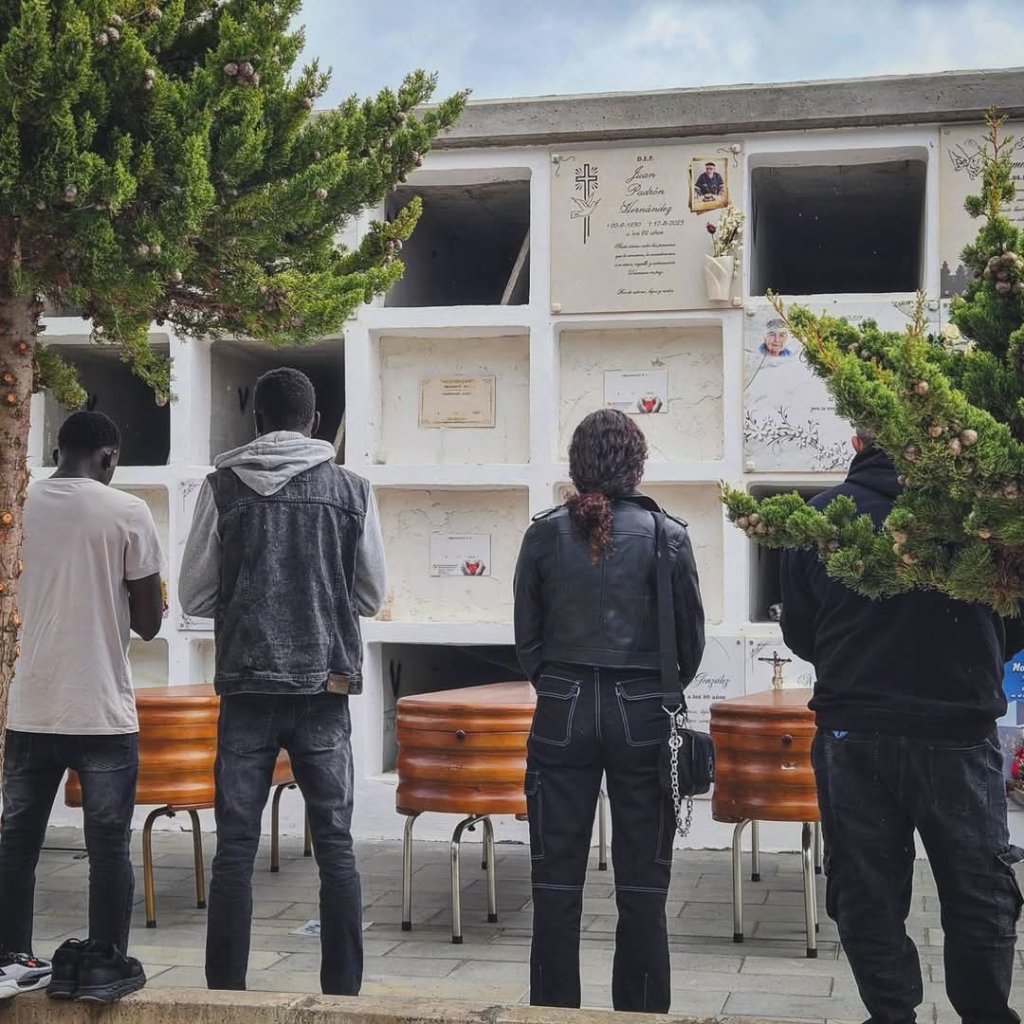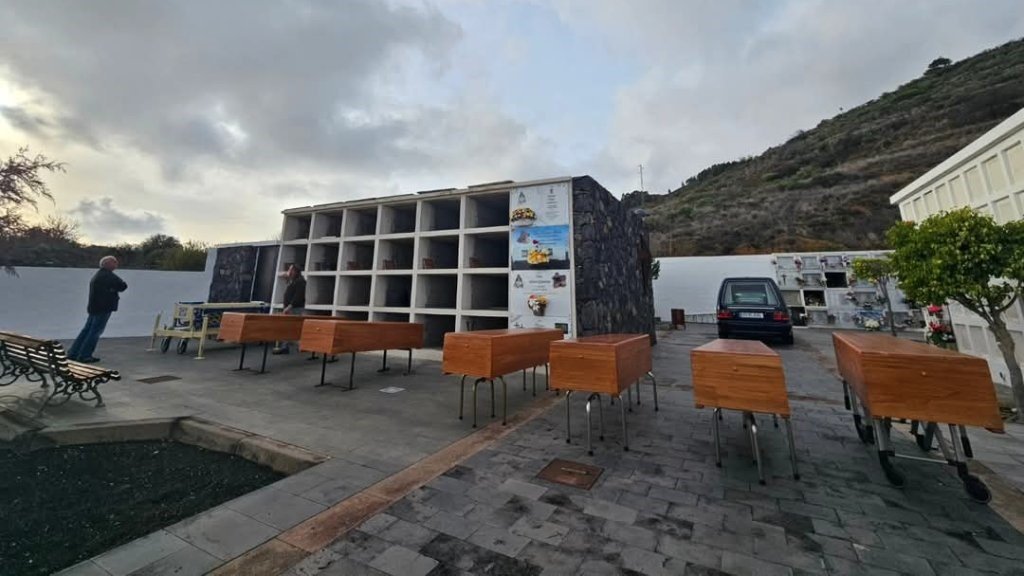Spain’s Canary Islands are struggling to cope with an influx of migrant bodies. Volunteers in El Hierro are stepping up to offer burial rites and search for clues on the identity of those who died during their migration journey.
Life and death comes with the waves in El Hierro, a Spanish island located off the coast of West Africa. The island buried the first migrant of this year in late January. The young man had died shortly after his boat was towed into the port of La Restinga. He had been accompanied by 68 other migrants, but no one knew who he was.
He was thus laid to rest in a crypt, with a slab of stone that simply read: “Inmigrante”.
El Hierro has been struggling in recent years to cope with an influx of migrant bodies. The individuals either die on the way or after making the treacherous journey across the Atlantic Ocean from West Africa, once they are transferred to hospitals. In 2024, the island buried 39 migrants; in 2023, there were 11 burials, and in 2022, there was one.
"Spain is not structurally or adequately adapting to this phenomenon," said Antonio Sempere, a photojournalist from Ceuta. "In places like the Canary Islands, especially El Hierro and Tenerife, forensic services and facilities have been overwhelmed by the rising number of migrant bodies since 2020."
Read Also Canary Islands: Deaths, arrivals and the ongoing debates over redistributing young migrants

Over 40,000 migrants reached the Canary Islands in 2024, with about half of them landing in El Hierro. A record number of 10,457 people died the same year while trying to reach Spain, according to estimates by the Caminando Fronteras NGO.
Due to the lack of space, authorities have "resorted to using improvised refrigerator containers or transporting bodies to other islands or provinces," said Sempere. El Hierro has responded to the crisis by buying more freezers and using a chilled funeral home to accommodate the corpses.
Shipping the bodies elsewhere helps, but larger islands are facing saturation as well. Migrants are therefore usually buried several days after their death, before their relatives have a chance to be notified. The moment of burial, "often depends on police and administrative protocols, rather than the human aspect," said Haridian Marechal, a journalist involved in organizing the funerals.

Humane and respectful burials
"The rites, religion, or last wishes of the deceased are often unknown," said Marechal. "What is sought is that the burials be respectful and dignified. We accompany them at burials, place flowers, candles, and other gifts on the site, and read poems. And we gather as much information as possible in case a family member is looking for them."
Migrants sometimes carry documentation like a passport, ID, or medical records – which helps authorities identify them. Testimonies from other passengers who were onboard the vessel have also helped uncover the identity of migrants.
"We [the volunteers] would like to see improved investigation and identification efforts," said Marechal, who hopes a unified registry for deceased migrants will exist one day. "The information remains in police and judicial files for now, rather than in a public document."
Read AlsoOrganizations working to identify those who die at Europe's borders
The European Parliament in 2021 passed a resolution that urged member states to implement effective procedures for identifying people who die along migration routes. "This includes systematically collecting fingerprints, DNA samples, personal belongings, and post-mortem photographs. Yet in Spain, the implementation of these recommendations is highly inconsistent and absent in many cases," said Sempere.
Collecting and accessing information about deceased migrants is "like putting together a puzzle", said Marechal. Through official and unofficial channels, the families of some migrants have been informed of their burial in El Hierro. Finding the relatives is "never easy, because they can be in other countries in Africa and Europe, or in other parts of Spain".
For the others -- the nameless dead -- the island has managed to provide "simple, humane, respectful, and tolerant burials," said Marechal. "But we will continue to demand greater government involvement for quality care. There needs to be a voice for those who can no longer ask for help – the people who die in the Atlantic Ocean while seeking a better life."
